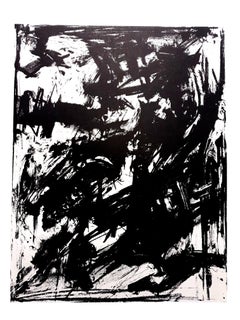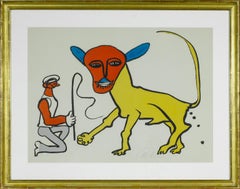George Edwards Figurative Prints
Known today as the Father of British Ornithology, George Edwards was a draftsman and naturalist who popularized the art of bird and animal illustrations throughout the 18th century. His main collections of etchings, which were bound as the volumes A Natural History of Uncommon Birds and Gleaning of Natural History, together comprise more than 600 animals and were the first works to delineate many of the featured species.
Edwards cultivated an interest in natural history while traveling around Europe, becoming particularly enamored with birds. Upon his return to the United Kingdom, in 1733, Irish physicist Hans Sloane, an acquaintance of British naturalists/illustrators Eleazar Albin and Mark Catesby, offered Edwards a librarian position at the Royal College of Physicians. The job granted him access to a large collection of works on natural history, which he explored enthusiastically.
With instruction from Catesby, Edwards learned etching and spent much of his time preparing plates and drawings for his books. While Edwards hand-colored his early editions, later works were colored in by other artists, like British artist Peter Paillou, allowing Edwards to focus on etching and writing.
George Edwards earned his reputation for both his illustrations and written descriptions of his subjects — widely acclaimed for their accuracy. Swedish botanist Carl Linnaeus cited Edwards’s texts when developing his major work, Systema Naturæ. The Royal Society in London awarded Edwards the Copley Medal in 1750 for outstanding achievement in the field of science. Edwards retired in 1763 to Plaistow, England, and died in 1773.
On 1stDibs, find a collection of George Edwards engravings and wall decorations.
19th Century Modern George Edwards Figurative Prints
Lithograph
1960s Modern George Edwards Figurative Prints
Lithograph
1970s Modern George Edwards Figurative Prints
Lithograph
1910s American Modern George Edwards Figurative Prints
Lithograph
1960s Modern George Edwards Figurative Prints
Lithograph
1930s American Modern George Edwards Figurative Prints
Lithograph
1980s Modern George Edwards Figurative Prints
Paper, Lithograph
1950s American Modern George Edwards Figurative Prints
Lithograph
1950s Modern George Edwards Figurative Prints
Lithograph
1960s Modern George Edwards Figurative Prints
Lithograph
1930s American Modern George Edwards Figurative Prints
Lithograph
1960s Modern George Edwards Figurative Prints
Lithograph
1960s Modern George Edwards Figurative Prints
Lithograph, Offset

